Abstract
OBJECTIVE: Our first objective was to develop an index of satellite exchange and then determine whether satellite exchangers (SEs) differed demographically or behaviorally from other injecting drug users (IDUs). Our second objective was to determine the degree that SEs contributed to needle exchange program (NEP) effectiveness. METHODS: We collected data from approximately 5000 Baltimore Needle Exchange Program (BNEP) participants on the number of syringes acquired and returned over the two-year period February 1995 to February 1997. We then conducted one-way ANOVAs and logistic regressions to determine if SEs were different from other IDUs. RESULTS: We classified 9.35% of the IDUs and SEs and showed that SEs reported levels of drug use and risk behavior similar to other BNEP participants. Although SEs represented less than 10% of all BNEP clients, they accounted for more than 64% of all needles distributed by the BNEP. We showed that SEs accessed more wide-ranging drug use networks than non-SE IDUs and thus can act as potential bridges for human immunodeficiency virus (HIV) prevention materials and messages to larger numbers of drug injectors. CONCLUSIONS: SEs can be expressly targeted with specific prevention messages and encouraged to be "ambassadors" for HIV prevention messages. Efforts to curtail the activities of SEs may detract from the effectiveness of NEPs.
Full text
PDF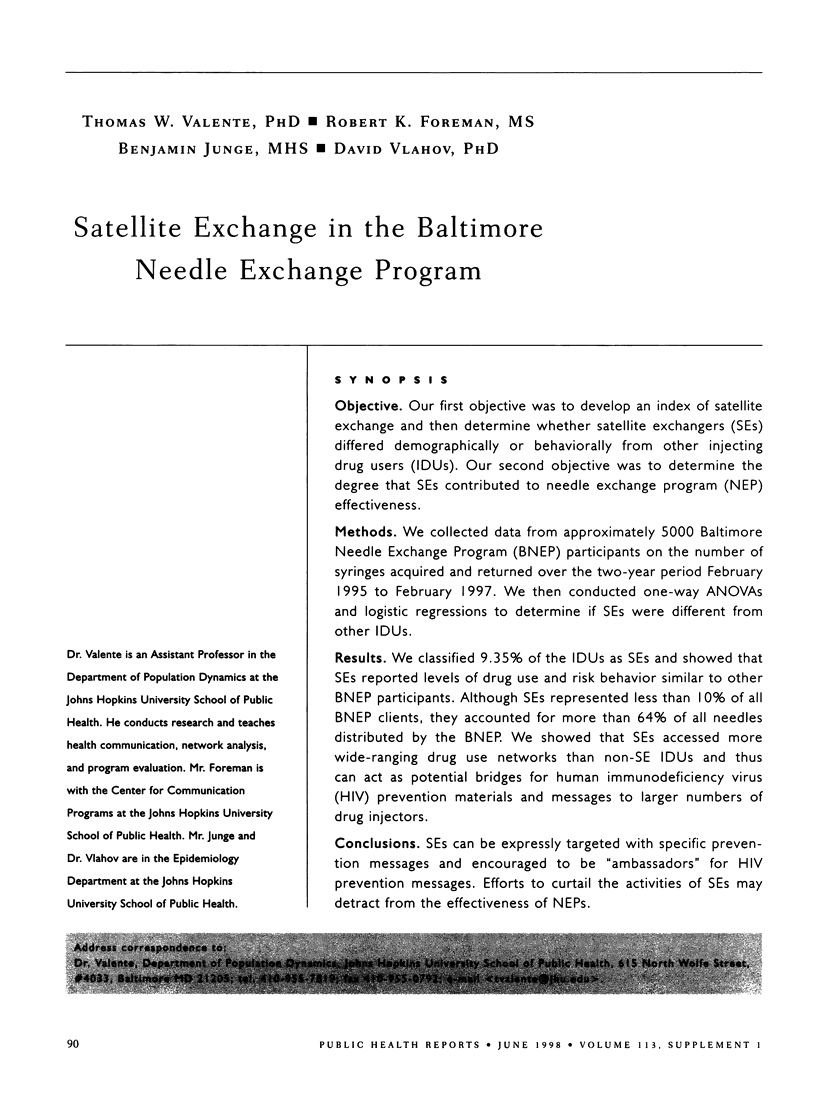
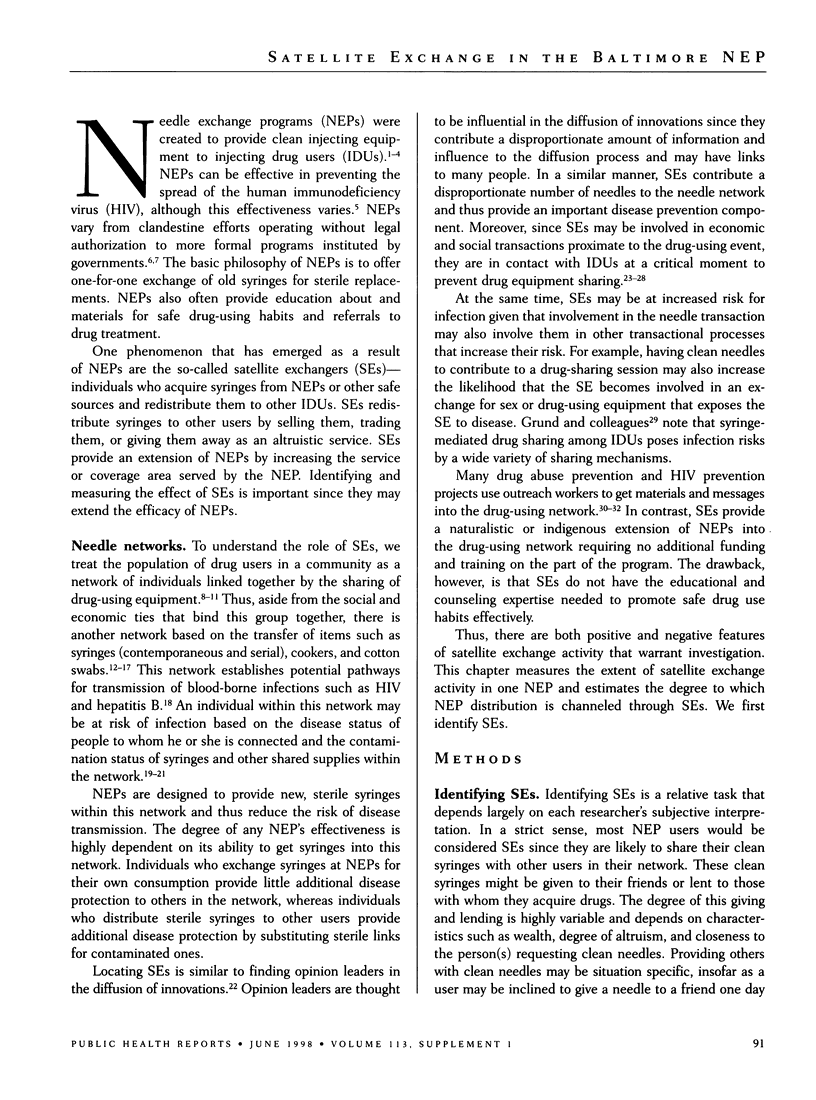
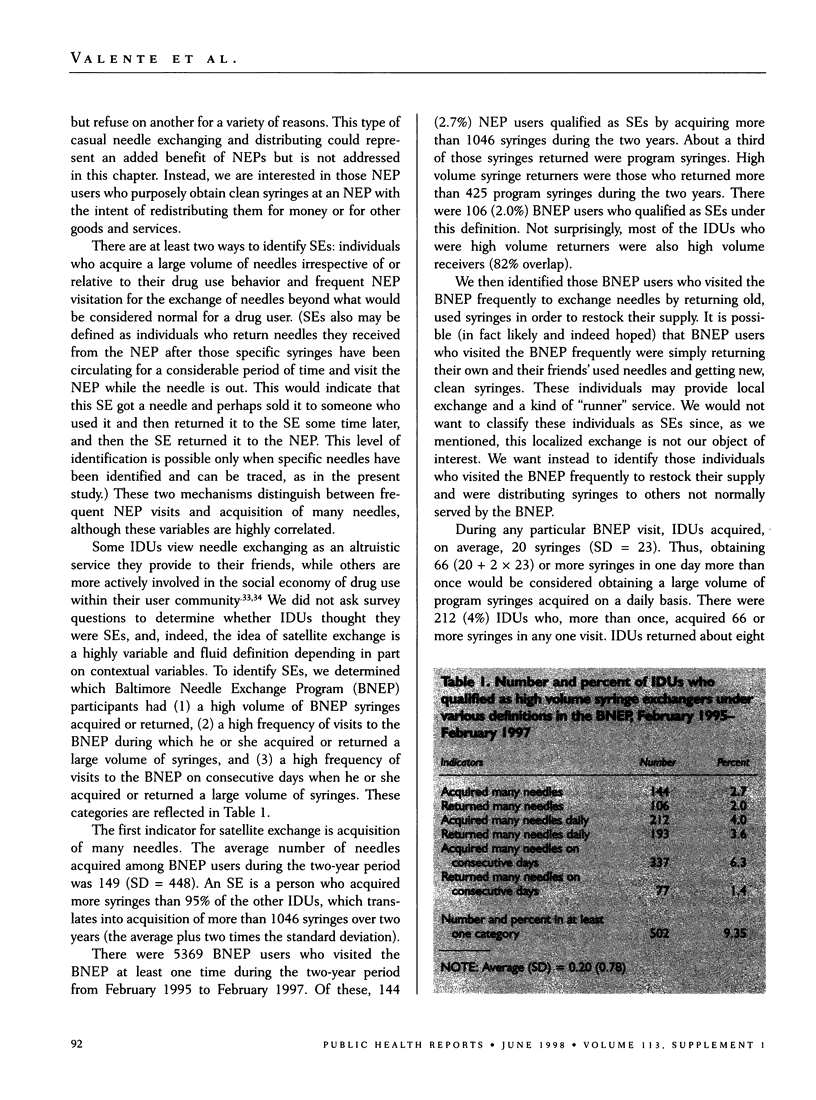
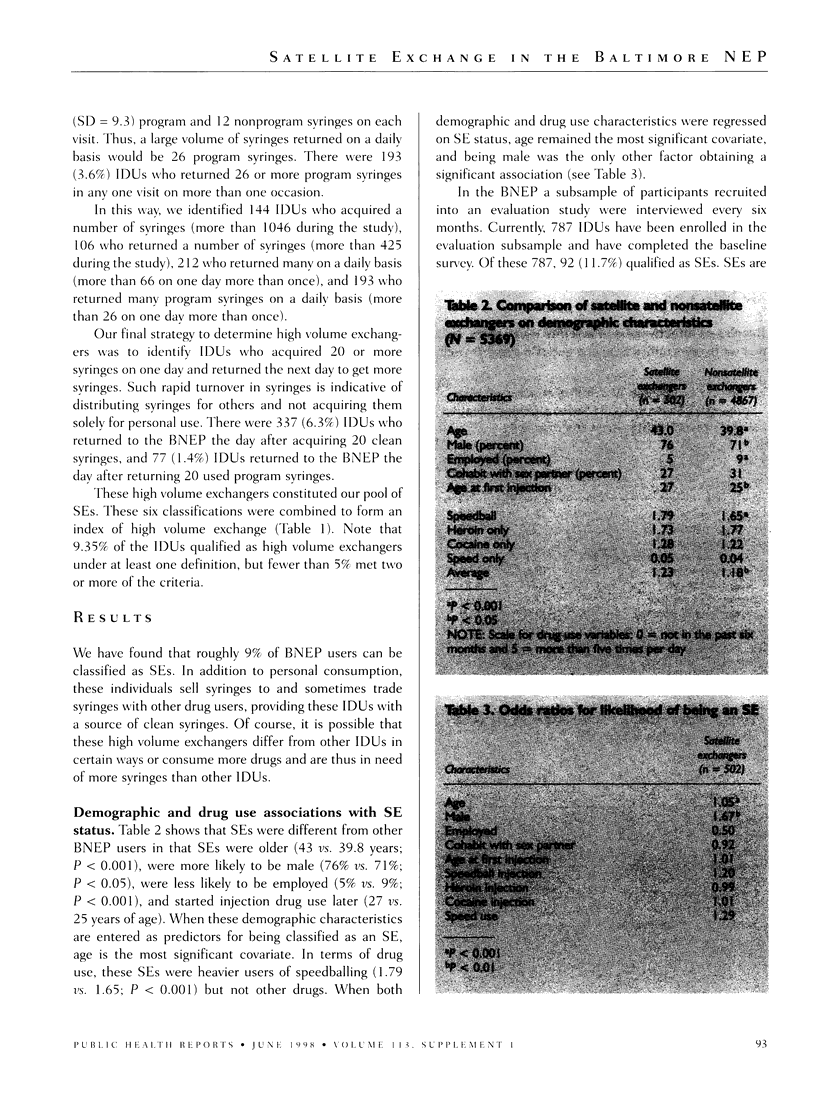
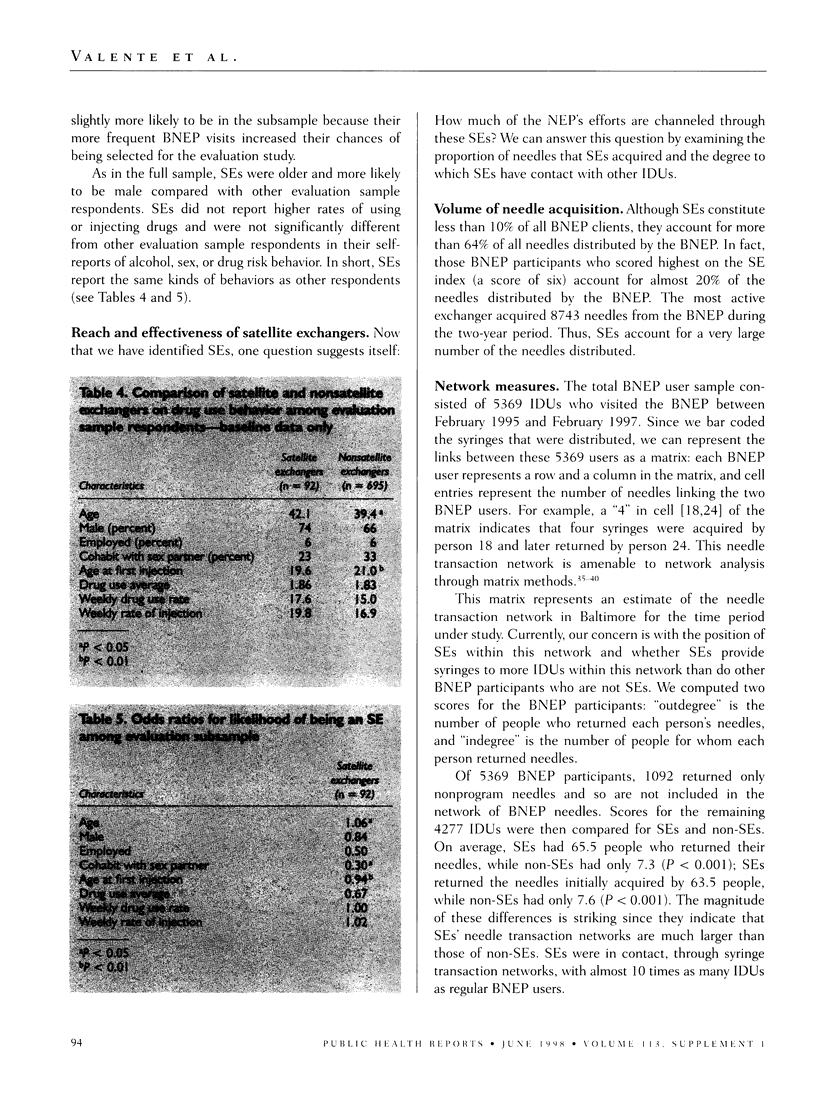
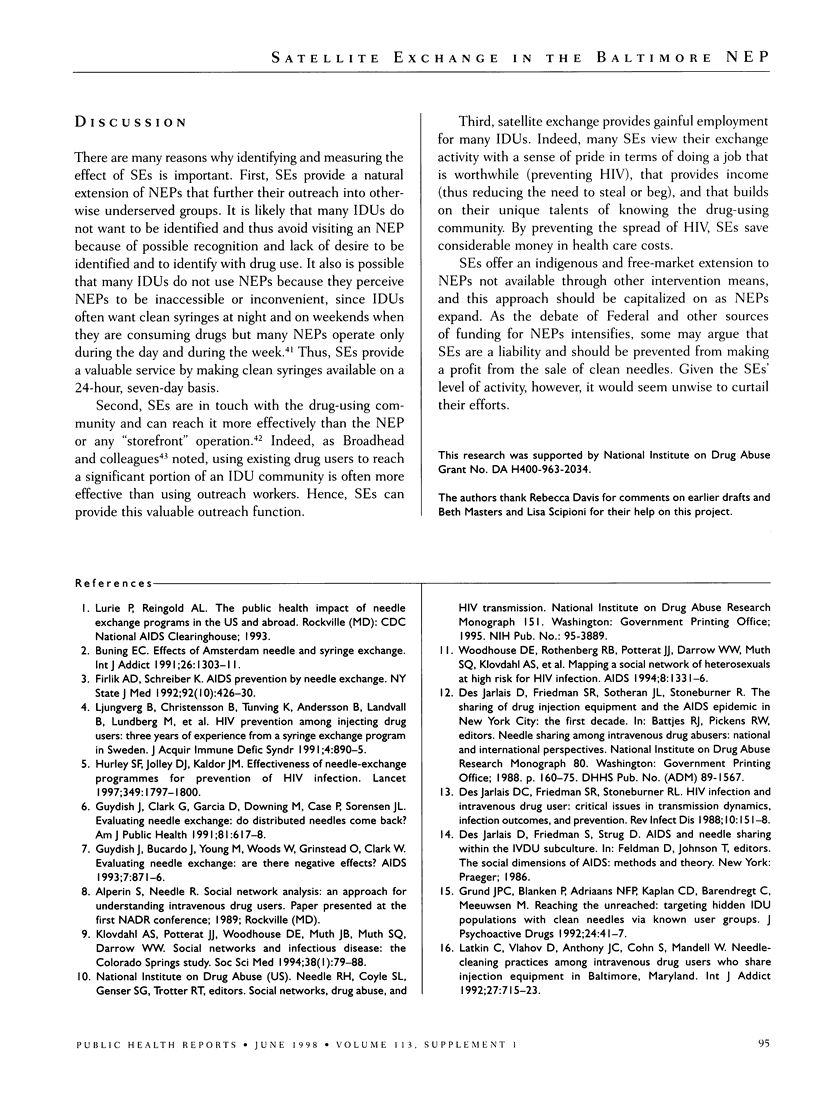
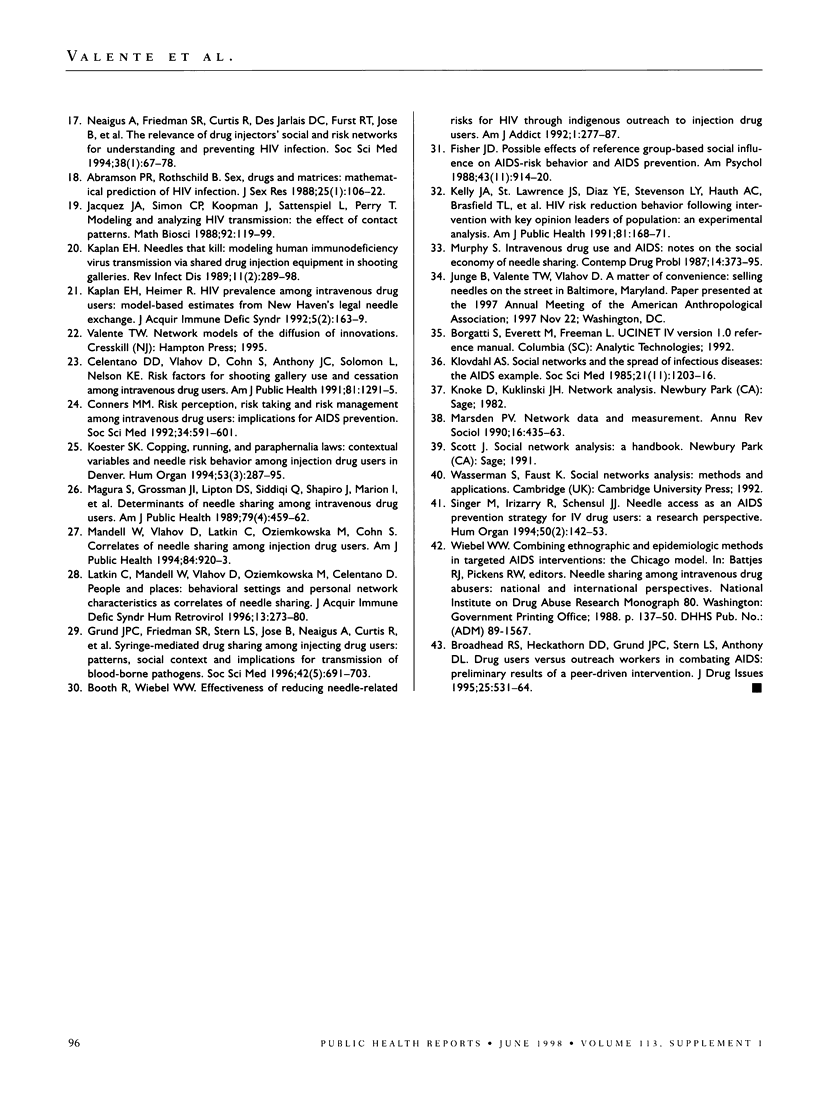
Selected References
These references are in PubMed. This may not be the complete list of references from this article.
- Buning E. C. Effects of Amsterdam needle and syringe exchange. Int J Addict. 1991 Dec;26(12):1303–1311. doi: 10.3109/10826089109062162. [DOI] [PubMed] [Google Scholar]
- Celentano D. D., Vlahov D., Cohn S., Anthony J. C., Solomon L., Nelson K. E. Risk factors for shooting gallery use and cessation among intravenous drug users. Am J Public Health. 1991 Oct;81(10):1291–1295. doi: 10.2105/ajph.81.10.1291. [DOI] [PMC free article] [PubMed] [Google Scholar]
- Connors M. M. Risk perception, risk taking and risk management among intravenous drug users: implications for AIDS prevention. Soc Sci Med. 1992 Mar;34(6):591–601. doi: 10.1016/0277-9536(92)90187-u. [DOI] [PubMed] [Google Scholar]
- Des Jarlais D. C., Friedman S. R., Stoneburner R. L. HIV infection and intravenous drug use: critical issues in transmission dynamics, infection outcomes, and prevention. Rev Infect Dis. 1988 Jan-Feb;10(1):151–158. doi: 10.1093/clinids/10.1.151. [DOI] [PubMed] [Google Scholar]
- Firlik A. D., Schreiber K. AIDS prevention by needle exchange. N Y State J Med. 1992 Oct;92(10):426–430. [PubMed] [Google Scholar]
- Fisher J. D. Possible effects of reference group-based social influence on AIDS-risk behavior and AIDS prevention. Am Psychol. 1988 Nov;43(11):914–920. doi: 10.1037//0003-066x.43.11.914. [DOI] [PubMed] [Google Scholar]
- Grund J. P., Blanken P., Adriaans N. F., Kaplan C. D., Barendregt C., Meeuwsen M. Reaching the unreached: targeting hidden IDU populations with clean needles via known user groups. J Psychoactive Drugs. 1992 Jan-Mar;24(1):41–47. doi: 10.1080/02791072.1992.10471617. [DOI] [PubMed] [Google Scholar]
- Grund J. P., Friedman S. R., Stern L. S., Jose B., Neaigus A., Curtis R., Des Jarlais D. C. Syringe-mediated drug sharing among injecting drug users: patterns, social context and implications for transmission of blood-borne pathogens. Soc Sci Med. 1996 Mar;42(5):691–703. doi: 10.1016/0277-9536(95)00193-x. [DOI] [PubMed] [Google Scholar]
- Guydish J., Bucardo J., Young M., Woods W., Grinstead O., Clark W. Evaluating needle exchange: are there negative effects? AIDS. 1993 Jun;7(6):871–876. [PubMed] [Google Scholar]
- Guydish J., Clark G., Garcia D., Downing M., Case P., Sorensen J. L. Evaluating needle exchange: do distributed needles come back? Am J Public Health. 1991 May;81(5):617–619. doi: 10.2105/ajph.81.5.617. [DOI] [PMC free article] [PubMed] [Google Scholar]
- Hurley S. F., Jolley D. J., Kaldor J. M. Effectiveness of needle-exchange programmes for prevention of HIV infection. Lancet. 1997 Jun 21;349(9068):1797–1800. doi: 10.1016/S0140-6736(96)11380-5. [DOI] [PubMed] [Google Scholar]
- Kaplan E. H., Heimer R. HIV prevalence among intravenous drug users: model-based estimates from New Haven's legal needle exchange. J Acquir Immune Defic Syndr. 1992;5(2):163–169. [PubMed] [Google Scholar]
- Kaplan E. H. Needles that kill: modeling human immunodeficiency virus transmission via shared drug injection equipment in shooting galleries. Rev Infect Dis. 1989 Mar-Apr;11(2):289–298. doi: 10.1093/clinids/11.2.289. [DOI] [PubMed] [Google Scholar]
- Kelly J. A., St Lawrence J. S., Diaz Y. E., Stevenson L. Y., Hauth A. C., Brasfield T. L., Kalichman S. C., Smith J. E., Andrew M. E. HIV risk behavior reduction following intervention with key opinion leaders of population: an experimental analysis. Am J Public Health. 1991 Feb;81(2):168–171. doi: 10.2105/ajph.81.2.168. [DOI] [PMC free article] [PubMed] [Google Scholar]
- Klovdahl A. S., Potterat J. J., Woodhouse D. E., Muth J. B., Muth S. Q., Darrow W. W. Social networks and infectious disease: the Colorado Springs Study. Soc Sci Med. 1994 Jan;38(1):79–88. doi: 10.1016/0277-9536(94)90302-6. [DOI] [PubMed] [Google Scholar]
- Klovdahl A. S. Social networks and the spread of infectious diseases: the AIDS example. Soc Sci Med. 1985;21(11):1203–1216. doi: 10.1016/0277-9536(85)90269-2. [DOI] [PubMed] [Google Scholar]
- Latkin C., Mandell W., Vlahov D., Oziemkowska M., Celentano D. People and places: behavioral settings and personal network characteristics as correlates of needle sharing. J Acquir Immune Defic Syndr Hum Retrovirol. 1996 Nov 1;13(3):273–280. doi: 10.1097/00042560-199611010-00010. [DOI] [PubMed] [Google Scholar]
- Ljungberg B., Christensson B., Tunving K., Andersson B., Landvall B., Lundberg M., Zäll-Friberg A. C. HIV prevention among injecting drug users: three years of experience from a syringe exchange program in Sweden. J Acquir Immune Defic Syndr. 1991;4(9):890–895. [PubMed] [Google Scholar]
- Magura S., Grossman J. I., Lipton D. S., Siddiqi Q., Shapiro J., Marion I., Amann K. R. Determinants of needle sharing among intravenous drug users. Am J Public Health. 1989 Apr;79(4):459–462. doi: 10.2105/ajph.79.4.459. [DOI] [PMC free article] [PubMed] [Google Scholar]
- Mandell W., Vlahov D., Latkin C., Oziemkowska M., Cohn S. Correlates of needle sharing among injection drug users. Am J Public Health. 1994 Jun;84(6):920–923. doi: 10.2105/ajph.84.6.920. [DOI] [PMC free article] [PubMed] [Google Scholar]
- Neaigus A., Friedman S. R., Curtis R., Des Jarlais D. C., Furst R. T., Jose B., Mota P., Stepherson B., Sufian M., Ward T. The relevance of drug injectors' social and risk networks for understanding and preventing HIV infection. Soc Sci Med. 1994 Jan;38(1):67–78. doi: 10.1016/0277-9536(94)90301-8. [DOI] [PubMed] [Google Scholar]


